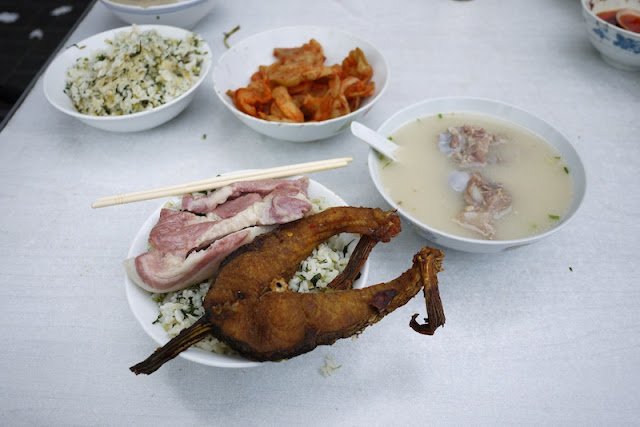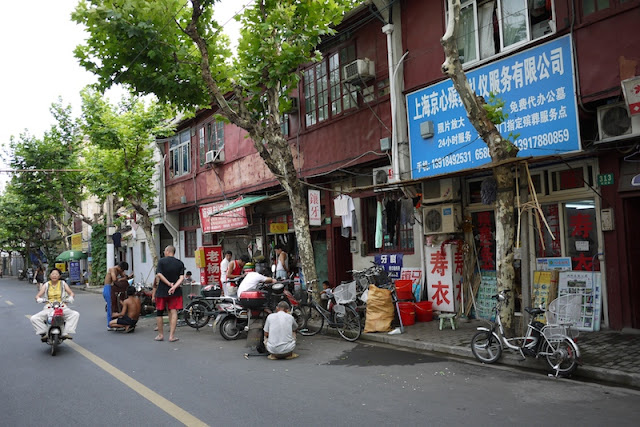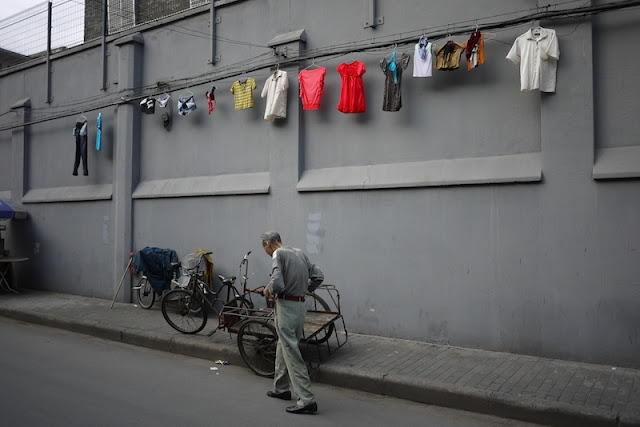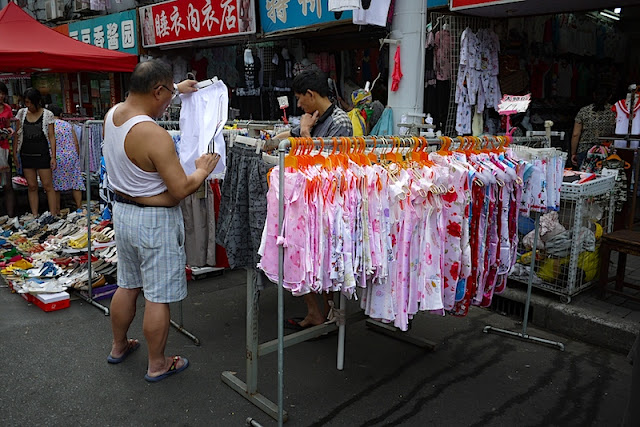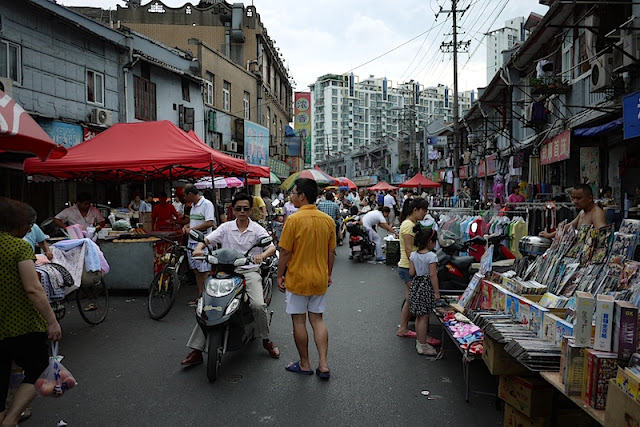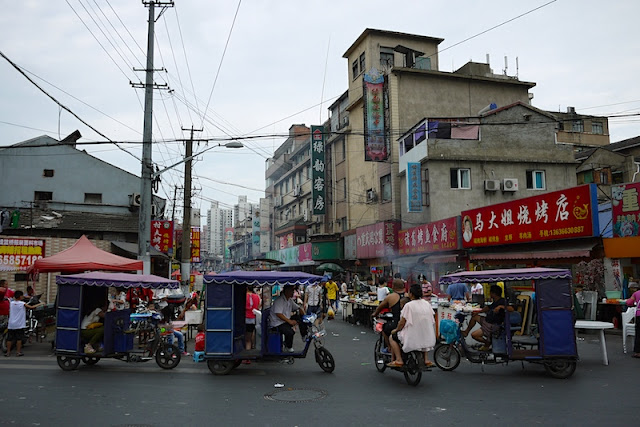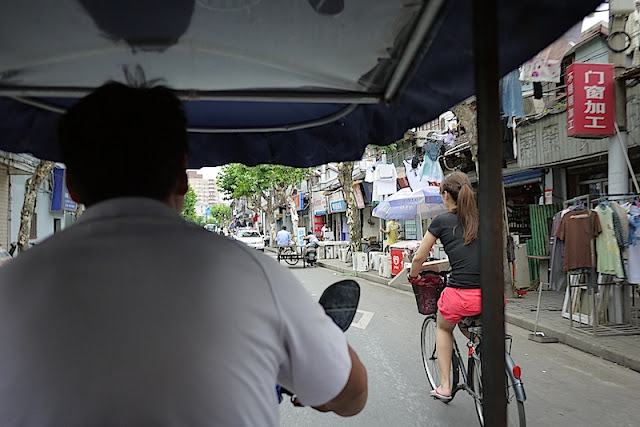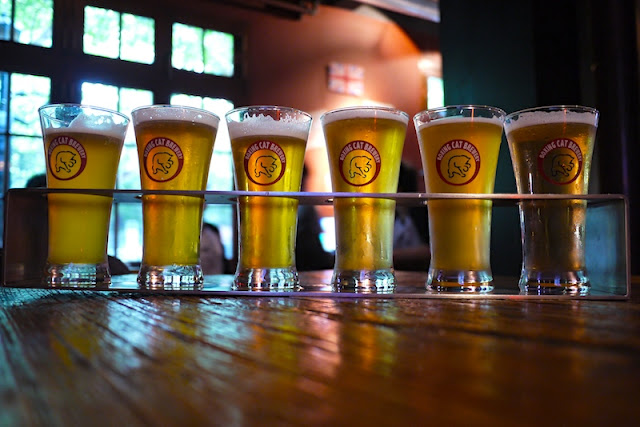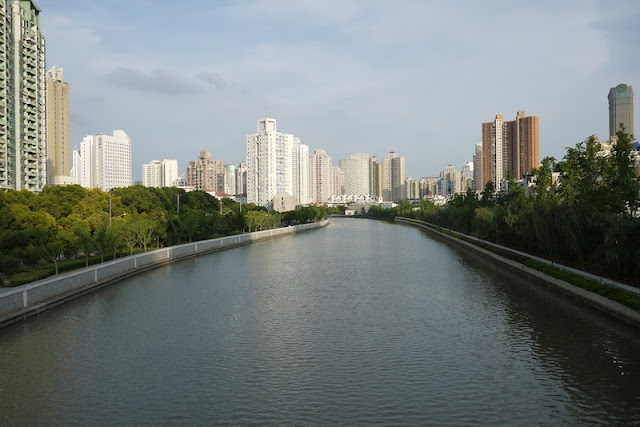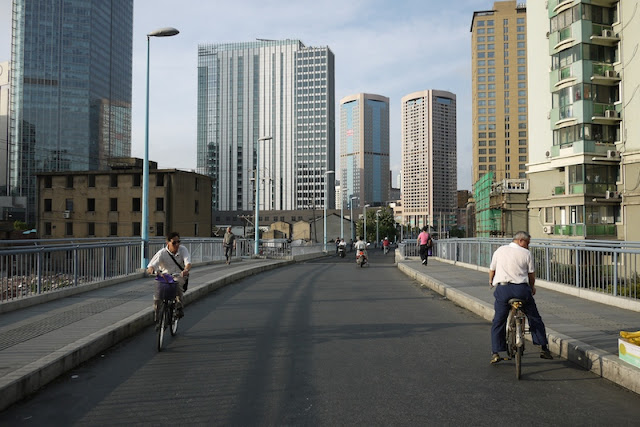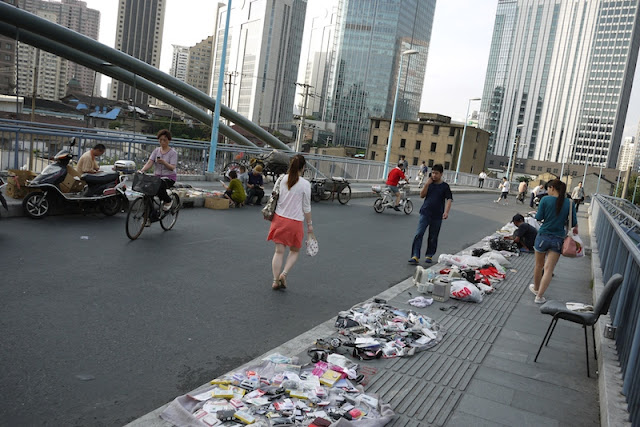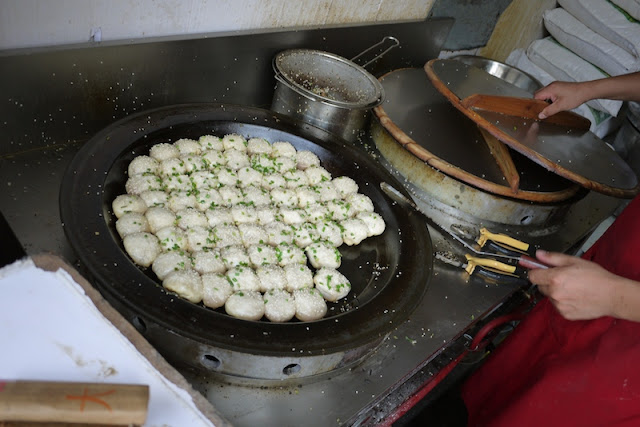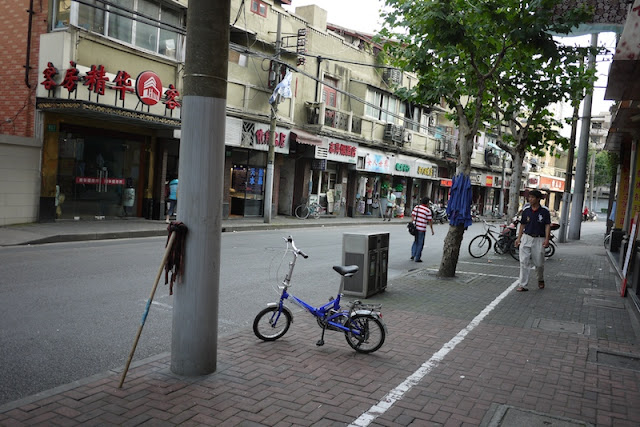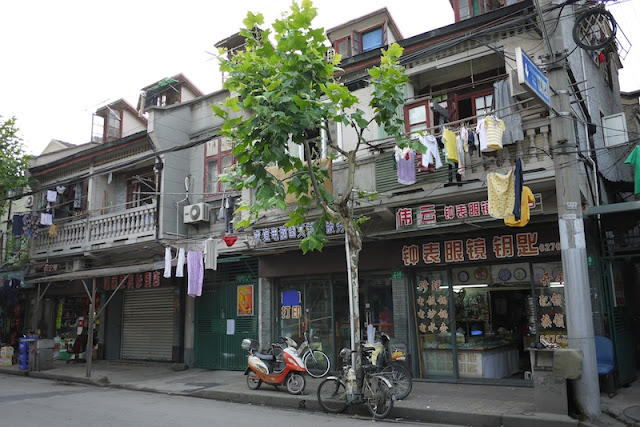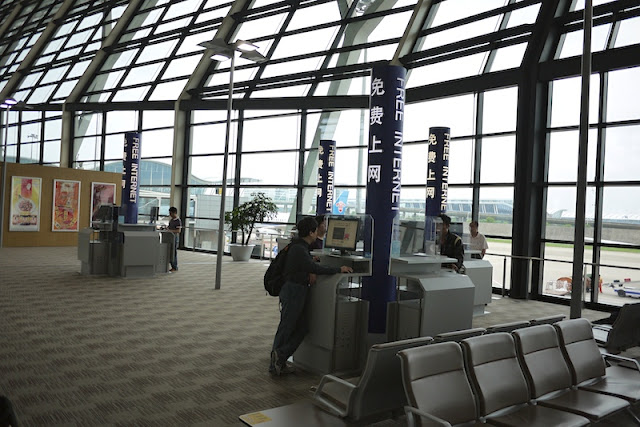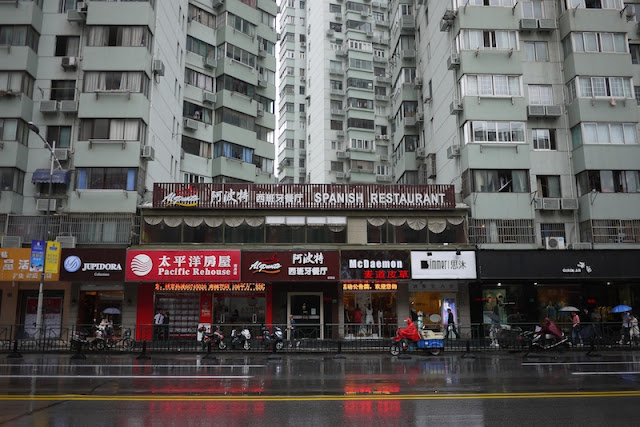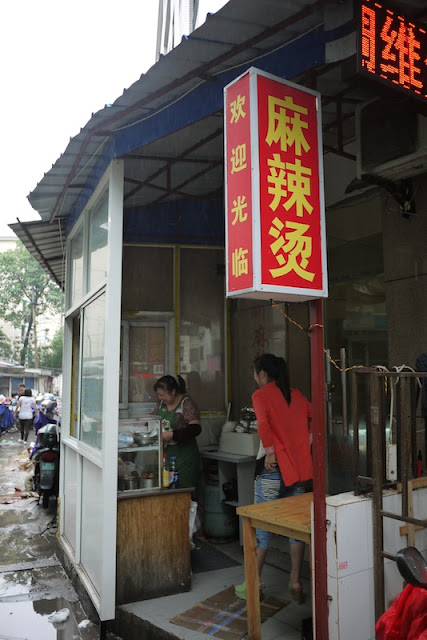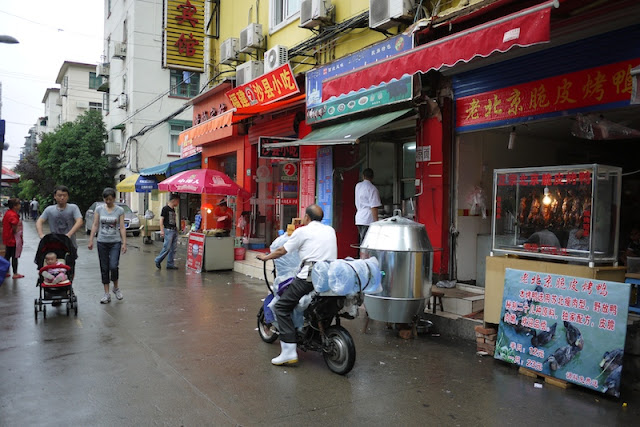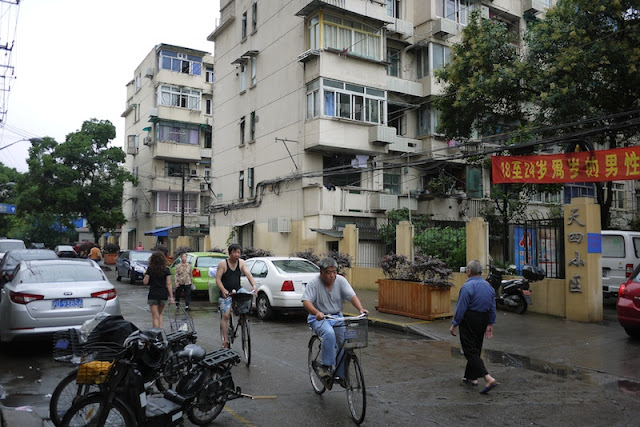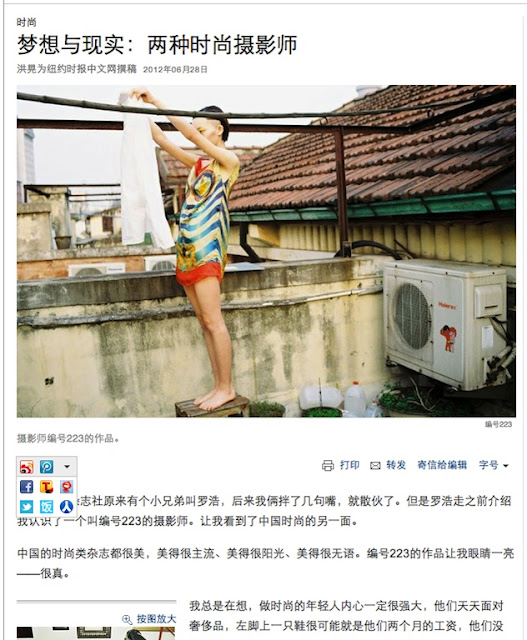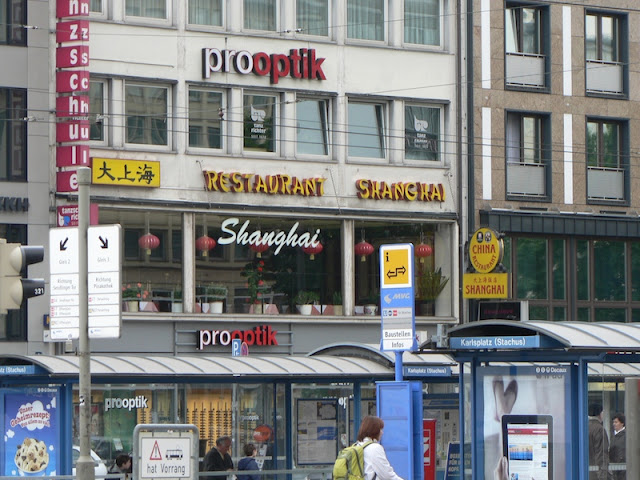In the
previous post I identified the city -- Shanghai -- in the first of two photos I shared in
an earlier post. The second photo may have presented an even greater challenge to recognize. I visited the city where it was taken two years ago to present a talk about conducting research in China. Despite being in Europe, at times I could still feel a small touch of China.
After flying from Shanghai with a connection in Dubai, I arrived late at night. The next morning I left my hotel to take a walk, and one of the first sights that caught my attention was this:
Although I was curious whether the "Restaurant Shanghai" served truly Shanghainese cuisine or a more generic form of Westernized Chinese food, I decided to take a pass. After all, I preferred to save myself for some of the local-style dumplings:
Also apparent in the above photo is the appropriately-sized glass containing a most glorious liquid. I enjoyed similar glasses at a variety of locations, such as this popular site with a "
Chinese Tower":
I did not recall seeing a pagoda quite like that anywhere in China, but the excellent beer (in appropriately-sized glasses) kept me from deeply pondering the issue.
But my focus was not always on the local food and drinks. During one of those moments I saw this display in front of a museum:
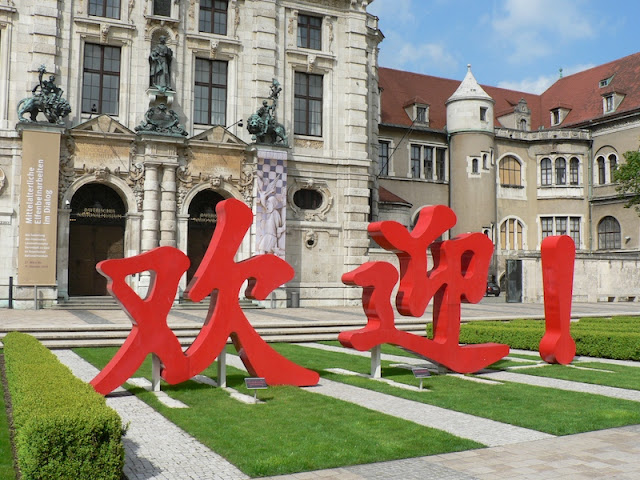 |
| The Chinese word "欢迎 "(huānyíng) means "Welcome" in English. |
I imagine any visitors from China would have been even more surprised than me to see such a greeting.
Finally, if the above photos are not enough clues, maybe this photo of one of my favorite castles in Europe, Schloss Nymphenburg, will do it:
Ah... München. Many years ago, the city known in English as "Munich" was the first place I visited outside of the U.S. (excluding an hour or two in Canada at Niagara Falls). It remains one of my favorite cities, and I have had the pleasure to visit a number of times. My most recent visit was the only time I arrived from China, so some of the above scenes particularly caught my attention.
However, Munich's art, music, people, food, drinks, and more have typically connected with me in ways that have little or nothing to do with China. As has some of its history. Some of it is a bit too heavy for this post, so I may touch on several assorted topics in the future. For now, I will leave you with a photo of one of my favorite snacks at
Munich's Viktualienmarkt:
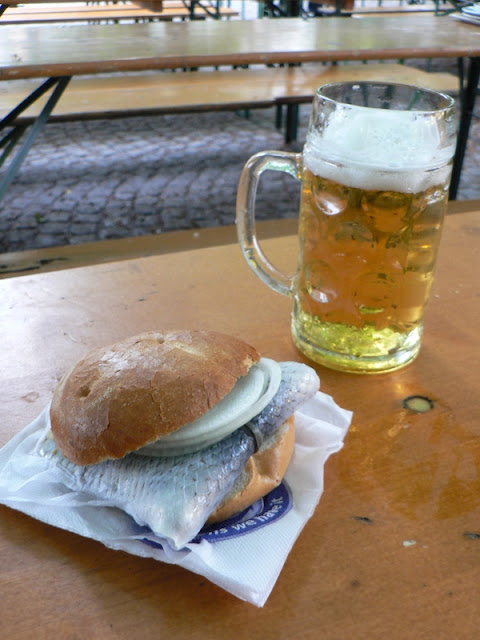 |
| A delicious herring and onion sandwich |
Of course it was accompanied by yet another appropriately-sized glass of beer.
Back to China soon, unless someone needs me to pay another visit to Munich.

